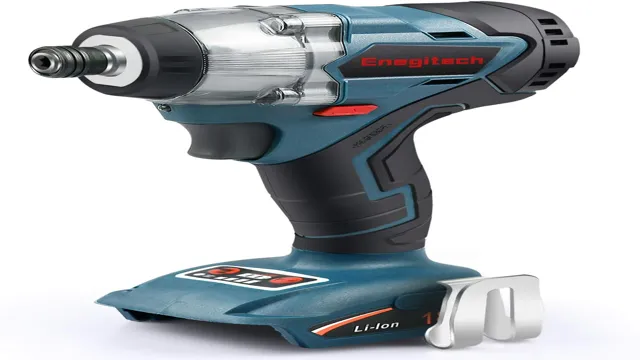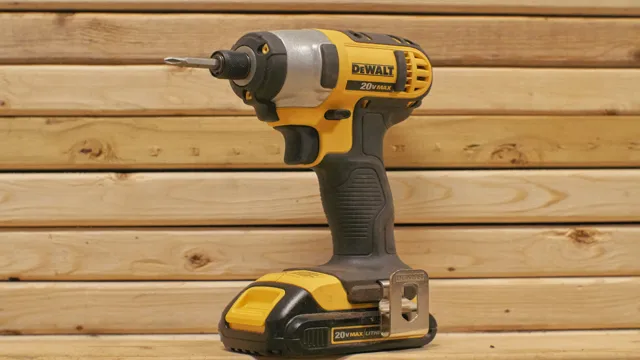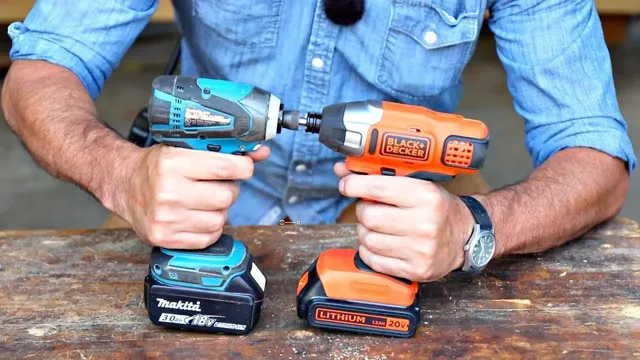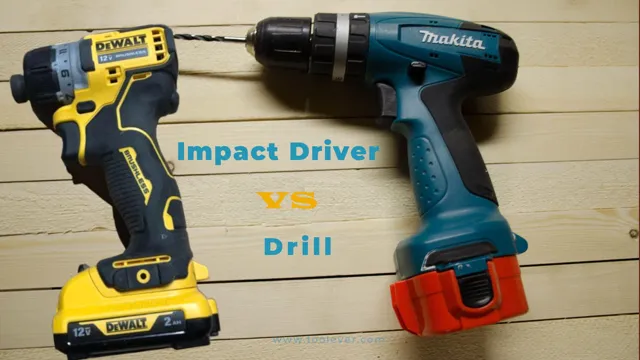Do You Need an Impact Driver and a Drill? Here’s What Every DIYer Should Know!
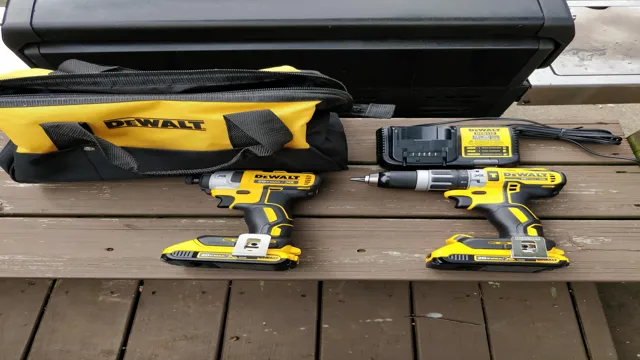
Do you really need both an impact driver and a drill? It’s a question that can leave even the most seasoned DIY-ers scratching their heads. On one hand, drills are versatile and can handle a variety of tasks. On the other hand, impact drivers pack a powerful punch and can handle tougher jobs with ease.
So, which one do you really need? In this blog, we’ll explore the similarities and differences between impact drivers and drills, and help you determine which one (or both!) is right for your tool collection. We’ll look at factors like power, torque, speed, and specialization, and provide real-world scenarios in which you might choose one tool over the other. By the end of this blog, you’ll have a better understanding of the strengths and weaknesses of both impact drivers and drills, and be able to make informed decisions when it comes to your own projects.
So, grab your favorite beverage and let’s dive in!
Understanding the Difference
If you’re wondering whether you need an impact driver and a drill, the answer depends on the type of job you’re doing. Both tools are used for drilling holes and driving screws, but they have different strengths and weaknesses. A drill is great for drilling holes, driving screws, and mixing paint or mortar.
It’s a versatile tool that can handle a wide range of jobs. An impact driver, on the other hand, is better for driving long or thick screws, working with dense materials like hardwood or concrete, and loosening stuck bolts or nuts. Its high torque and quick bursts of power make it ideal for tough jobs that a drill might struggle with.
So, if you’re doing light work around the house, a drill may be all you need. But if you’re tackling a more challenging project, consider investing in an impact driver as well.
Impact Driver vs. Drill
If you’re in the market for a new power tool, you might be wondering what the difference is between an impact driver and a drill. The truth is, both tools can be useful in certain situations, but they have some key differences that you should be aware of. Basically, a drill is designed to drill holes and drive screws into softer materials like wood, while an impact driver is designed for tougher jobs, like driving screws into metal or concrete.
The main difference between the two is that an impact driver has much higher torque, which means it can deliver more force to the screw, making it easier to drive into tough materials. So, if you’re working with tougher materials, an impact driver is probably the better choice. However, if you just need to drill some holes in wood or other soft materials, a drill will do the job just fine.
Ultimately, both tools have their place in the workshop, so it’s important to choose the one that best meets your needs.
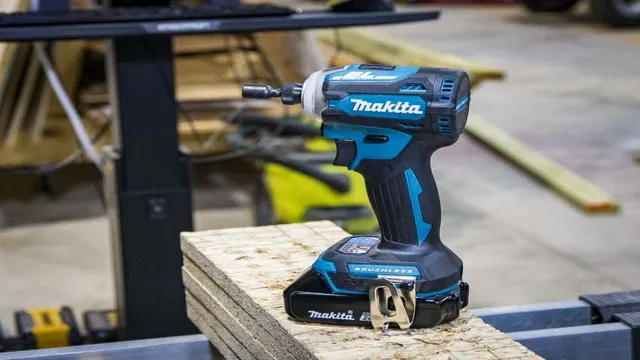
Power and Torque
Power and torque are two commonly misunderstood terms in the automotive industry. While they are related, they are not the same thing. Power is the rate at which work is done, while torque is the twisting force that causes rotation.
Think of torque as the force that allows you to accelerate quickly from a stop, and power as the ability to keep going at high speeds. While they are related, they are not interchangeable. A vehicle with high torque but low power may accelerate quickly from a stop, but will struggle to maintain high speeds.
A vehicle with high power but low torque may struggle to accelerate quickly, but will be better at maintaining high speeds. Understanding the difference between power and torque can help you choose the vehicle that is best suited to your needs, whether that be fast acceleration or consistent high speeds.
Speed and Precision
When it comes to completing tasks, speed and precision are both important, but they are different from one another. Speed refers to how quickly a task can be accomplished, while precision refers to how accurately it can be completed. For example, if you’re a chef making a dish, speed would mean making the dish in a short amount of time, while precision would be ensuring that the ingredients are precisely measured to create the dish correctly.
In many cases, achieving both speed and precision is crucial. In professional settings, such as manufacturing or healthcare, the work must be completed quickly, but it must also be done accurately to ensure the safety and quality of the end product. Balancing these two factors can be challenging, but with practice and experience, it can be achieved.
By prioritizing both speed and precision, you can ensure that your work is not only done quickly but also correctly the first time, reducing the need for revisions or corrections later on.
Benefits of Using Both
Do you need an impact driver and a drill? The short answer is “yes” if you want to be efficient and get the job done right. While both tools can drill holes and drive screws, they are designed for different tasks. A drill is perfect for drilling holes in wood, plastic, and metal, while an impact driver excels at driving screws and bolts into tougher materials such as masonry or hardwood.
Plus, an impact driver reduces wrist and arm fatigue due to its high torque output. By having both tools in your arsenal, you can save time by switching between them for specific tasks. For example, use a drill to make pilot holes, then switch to an impact driver to drive in the screws.
This not only speeds up the process but also ensures a clean, precise finish. Investing in both the tools is a smart move that enhances your overall workload efficiency and allows you to tackle any job that comes your way with ease.
Efficiency and Speed
Efficiency and speed go hand in hand, especially in today’s fast-paced world. While some may argue that prioritizing one over the other can lead to a compromise, the truth is that using both can bring a multitude of benefits. For instance, being efficient means handling tasks with minimal time and effort without sacrificing quality.
Meanwhile, speed refers to how fast you can get things done. By combining both, you’re not only able to finish tasks faster but also with better results. Imagine being able to finish a project without having to spend countless hours on it.
That’s the kind of productivity that efficiency and speed can bring. And let’s not forget about the financial benefits. By maximizing both, companies can save a lot of money and resources.
Additionally, individuals can achieve better work-life balance by freeing up more time to do things they enjoy. In conclusion, the benefits of using efficiency and speed together are numerous, and incorporating them into our daily lives can lead to increased productivity, satisfaction, and success.
Versatility and Flexibility
When it comes to work or personal projects, having versatility and flexibility is crucial in achieving success. Using both in combination can provide you with a plethora of benefits that can help you to perform at your best. Versatility refers to having a wide range of skills and capabilities, while flexibility allows you to adapt to different situations and environments.
By having both of these qualities, you can increase your chances of success, as you will be able to take on challenges from different angles. Additionally, using both versatility and flexibility can help you to stand out from the crowd, as you will be seen as someone who can handle any task or situation that comes their way. In conclusion, using both versatility and flexibility can be hugely beneficial, so it’s important to work on developing both of these qualities in yourself.
Considerations Before Buying
When it comes to purchasing power tools, it’s important to consider whether or not you’ll need both an impact driver and a drill. While these tools may seem similar, they actually serve different purposes. A drill is great for creating holes in wood, metal, and other materials, while an impact driver is more suited for driving long screws and bolts into surfaces.
So, before you make your purchase, think about the type of projects you’ll be working on. If you’ll be doing a lot of woodworking, a drill may be all you need. However, if you’ll be working with larger screws or bolts, an impact driver may be a better choice.
It’s also worth considering if you have any physical limitations, as impact drivers can be more powerful and difficult to handle than drills. Ultimately, the decision comes down to your specific needs and preferences – so take the time to research and make an informed choice.
Cost and Budget
When it comes to buying anything, cost and budget are the two most important factors to consider. It’s essential to set a budget before purchasing any product so that you don’t end up overspending. When considering the cost of a product, you need to think beyond the purchase price.
You should account for any additional fees that might be involved, such as shipping costs or taxes. Also, keep in mind the maintenance costs. Some products might be cheaper initially, but they may require more maintenance and repair costs, making them more expensive in the long run.
While cost is essential, it’s also important to make sure that the product you’re buying is of good quality. Sometimes, it’s worth spending a little extra if it means buying a high-quality product that will last longer. In conclusion, budgeting and evaluating the true cost of a product is crucial before making a purchase.
Purpose and Usage
Before you dive in and buy a product, there are a few considerations you should keep in mind when it comes to purpose and usage. Firstly, it’s important to think about why you need the product and how you’ll be using it. Does it serve a specific purpose, or do you just want it for novelty? Do you need it for personal use, or will it be for a business or professional setting? Asking yourself these questions can help you narrow down your search and make a more informed decision.
Additionally, you should check the product specifications and features to ensure that it aligns with your needs. Don’t buy a product with a ton of bells and whistles if you’ll only be using a few of them. In short, take the time to consider your specific needs and usage before making your purchase to ensure that you get the most value out of your investment.
Conclusion
After much consideration, it’s clear that owning both an impact driver and a drill is the way to go if you’re serious about DIY projects. It’s like having both a hammer and a screwdriver in your toolbox – while you could probably make do with just one, having both opens up new possibilities and makes the job easier. And let’s be real, who doesn’t love a tool that can deliver both precision and brute force? So, if you’re thinking about investing in some tools, don’t be afraid to double up.
You’ll thank yourself later when you’re effortlessly driving in screws and drilling through tough materials like a pro.”
FAQs
What is the difference between an impact driver and a drill?
While both tools are used for drilling, an impact driver is specifically designed for tasks that require more torque, such as driving long screws into hard materials. A drill is better suited for tasks that require more precision and control.
Can an impact driver replace a drill?
While an impact driver can handle some of the tasks typically performed by a drill, such as drilling holes or driving small screws, it’s not a complete replacement. A drill is still necessary for tasks that require more precision and control, such as drilling in metal or wood.
What types of projects require an impact driver?
An impact driver is highly useful for DIY projects that involve driving lots of long screws or working with materials like hardwood or metal that require more torque to get the job done. Examples of projects that may require an impact driver include building furniture, laying flooring, or installing cabinetry.
Do I need to buy both an impact driver and a drill?
While it’s possible to get by with just one or the other, owning both an impact driver and a drill can be highly beneficial. By having both tools, you’ll be able to tackle a wider range of home improvement projects, both large and small.
What features should I look for when buying an impact driver or drill?
When selecting an impact driver or a drill, look for tools with adjustable speeds, comfortable grips, and easy-to-change batteries or cords. It’s also important to consider the type of material you’ll be working with and whether the tool you choose is powerful enough to handle the task at hand.
How should I maintain my impact driver and drill?
To keep your tools in good working order, regularly clean them and replace any worn or damaged parts. Keep them stored in a dry place, and avoid dropping or throwing them, as this can damage the internal components.
Can an impact driver or drill be dangerous to use?
As with any power tool, it’s important to use an impact driver or drill safely to prevent injury or damage to property. Always read the user manual before use and wear appropriate safety gear, such as eye protection and gloves. Be sure to keep your hands and fingers clear of moving parts and never force the tool beyond its capacity.

